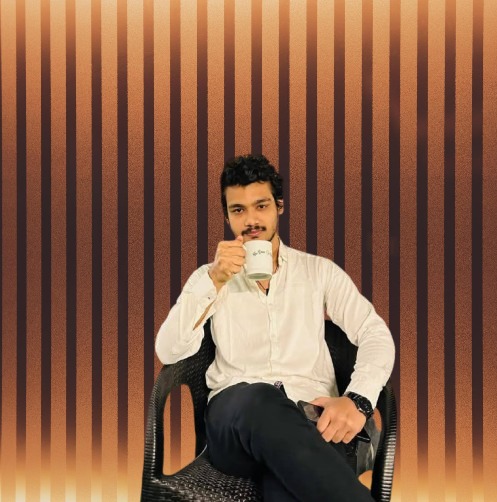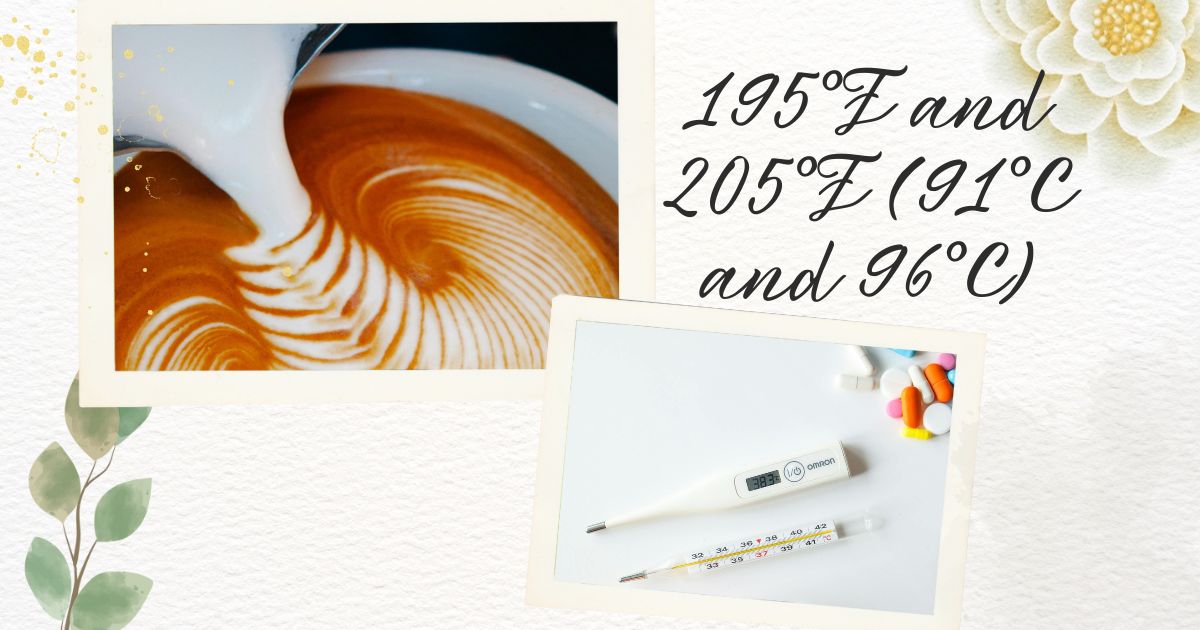Last updated on July 30th, 2025 at 08:11 pm
Adjustments by Roast Level & Coffee Type

Not all coffee roasts need the same water temperature.
Roast level affects bean density, oil content, and how flavors release during brewing.
Here’s how to tweak temps for the best flavor, using expert advice from Fernwood Coffee, Clive Coffee, and Bon Appétit.
Light Roast Beans – Use Higher Temperatures (~203–205 °F)
Light roasts are dense and packed with origin flavors. But that density means they need more heat to extract properly.
Why it works:
Higher heat breaks through the bean’s tougher cell structure.
Brings out bright acidity, floral, and citrus notes.
Best range:
203–205 °F (95–96 °C)
Tips:
Use a slightly finer grind to help with extraction.
Ideal for pour-over or drip where control matters.
Want the fruity, complex flavors in light roast? Turn up the heat—but don’t go over 205 °F.
Medium Roast – Stick to the Middle (~200 °F)
Medium roasts offer balance between body and brightness. They’re less dense than light, but not as oily as dark roasts.
Best range:
198–202 °F (92–94 °C)
Why it works:
Delivers consistent extraction without the risk of sourness or bitterness.
Great for most brew methods (drip, AeroPress, pour-over).
Dark Roast – Use Lower Temperatures (~195–198 °F)
Dark roasts are more brittle and oily. High heat can destroy what flavor’s left—leaving harsh, smoky bitterness.
Best range:
195–198 °F (90–92 °C)
Why lower temp helps:
Prevents over-extraction of burnt-tasting compounds.
Preserves any sweet, chocolatey notes.
Pro tip:
If using immersion methods like French press, try 185–195 °F for smooth, low-acid cups.
Temperature Tweaks by Brewing Method
Your brew method matters just as much as roast.
Each technique holds heat differently—so adjust accordingly.
Pour-Over / Drip – Go Higher (200–207 °F)
With pour-over, water cools rapidly as it flows and contacts air. You’ll lose heat fast.
Best range:
200–207 °F (93–97 °C)
Why it works:
Offsets temperature loss during pour.
Helps reach full extraction for clarity and brightness.
Tips:
Use a gooseneck kettle for flow control.
Preheat your brewer and cup to retain more heat.
French Press / Immersion – Stay in the Mid Range (195–200 °F)
Immersion methods retain heat longer—so you don’t need to go as hot.
Best range:
195–200 °F (90–93 °C)
For dark roasts: 180–185 °F (82–85 °C) to avoid bitterness
Why it works:
Long steeping time + medium heat = rich, full-bodied brew.
Pro tip:
Stir halfway through steep to improve extraction.
Espresso – Use Lower Temps (190–195 °F)
Espresso uses pressure—not just heat—for extraction.
Best range:
190–195 °F (88–90 °C)
Why lower works:
High pressure accelerates extraction.
Too much heat risks burning the puck and creating bitterness.
Tips:
If shots taste bitter, lower temp by a degree or two.
Consistency is key: use PID controllers if available.
Cold Brew & Iced Coffee – No Heat Needed
Cold brew is a different beast. It uses cold or room-temperature water over 12–24 hours.
Why it works:
Cold extraction pulls fewer bitter acids.
Produces a smooth, mellow cup with low acidity.
Pro tip:
Want to serve it hot? Brew cold, then heat gently without boiling.
Key Takeaways:
Match your brew temperature to both roast and method.
Use higher heat for light roasts and pour-over, lower for dark roasts and espresso.
Small changes—just 2–3 degrees—can dramatically change flavor.
Tweak with intention, and you’ll unlock your best cup every time.
Read Also:
👉 How to Make Coffee with Whole Beans
👉 Caffeine in Chocolate-Covered Coffee Beans
Best Drinking & Serving Temperature
Nailing the perfect brewing temp is only half the battle.
The serving temperature—when your coffee hits your lips—plays a huge role in how it tastes.
The Flavor Sweet Spot
According to research (and experience), coffee tastes best when served at ~68–70 °C (154–158 °F).
Why?
Below this range: flavors become muted, body feels thinner.
Above this range: too hot to taste—just bitterness and burn risk.
The Enjoyment Window
As coffee cools, flavor perception peaks between 120–140 °F (49–60 °C).
That’s when:
Sweetness becomes more noticeable
Acidity balances out
Aromatics hit their stride
Pro tip: Don’t rush. Let your coffee cool for a minute or two before sipping.
Sip too early? You miss all the flavor.
Wait too long? You lose aroma and mouthfeel.
Tools & Tips to Measure and Maintain Temperature
The right tools make temperature control effortless—and the payoff is better coffee in every cup.
1. Use a Thermometer
Types:
Probe thermometer: insert directly into water (very accurate)
Infrared thermometer: quick surface reading (convenient, but slightly less precise)
- Ideal for checking water temp before brewing
- Great for dialing in custom brewing zones
Choose a Temperature-Controlled Kettle
Gooseneck kettles with digital controls give you precision—down to the degree.
Why it matters:
Maintain perfect temp during pour-over
Repeatable results every time
No need to guess or over-boil
Top pick: Variable temp kettles like Fellow Stagg or Breville Smart Kettle
Preheat Your Equipment
Heat loss ruins extraction. Fight it by preheating:
Your mug
Brewing device (Chemex, French press, etc.)
Carafe or server
How:
Swirl with hot water for 10 seconds
Dump before brewing
A 5-degree drop mid-brew can shift flavor entirely.
Use Heat-Retaining Mugs or Smart Mugs
Keep your coffee warm at the ideal drinking temp longer with:
Double-wall ceramic or stainless mugs
Vacuum-insulated tumblers
Smart mugs (like Ember) with temp control at the sip-level
These tools help preserve your coffee’s flavor profile—especially in cooler environments.
Quick Recap:
Serve at ~154–158 °F (68–70 °C)
Best flavor hits at 120–140 °F (49–60 °C)
Use tools like thermometers, gooseneck kettles, and smart mugs
Preheat gear to avoid heat loss and weak brews
When you control temp from start to finish, every sip hits just right.
Common Flavor Problems & How to Fix Them by Adjusting Temp
Brewing great coffee is a balance of temperature, grind, and time.
If your cup tastes off, the temperature is often the root cause.
Here’s how to fix it fast:
Problem: Sour, Weak, or Flat Coffee
Likely cause: Under‑extraction
This means the water didn’t pull enough flavor from the grounds.
Fix It:
Raise the water temperature (try 2–4 °F higher)
Grind finer to slow extraction and increase contact surface
Ensure you’re brewing long enough (especially for immersion methods)
Light roasts are especially prone to sourness if temp is too low.
Problem: Bitter, Burnt, or Dry Taste
Likely cause: Over‑extraction
This happens when water pulls too much from the grounds—including undesirable compounds.
Fix It:
Lower the water temperature (drop 2–5 °F)
Grind coarser for faster flow and less extraction
Shorten brew time, especially in pour-over and immersion methods
Dark roasts are more fragile—heat exaggerates bitterness.
Bonus Troubleshooting Tips:
Always measure water temp, don’t guess
Use fresh coffee (age affects solubility and extraction)
Try one variable at a time so you know what’s working
Roast–Method–Temp Quick Reference Table
Use this table to quickly dial in your brew. Adjust within ranges based on taste.
| Roast | Brew Method | Temp (°F/°C) | Notes |
|---|---|---|---|
| Light Roast | Pour-over / Drip | 203–205 °F (95–96 °C) | Brighter beans need more heat for full extraction |
| Light Roast | French Press | 200–203 °F (93–95 °C) | Let steep longer if flavors are too sharp |
| Medium Roast | Drip / Pour-over | 198–202 °F (92–94 °C) | Versatile range—start mid and adjust as needed |
| Medium Roast | French Press | 195–200 °F (90–93 °C) | Balanced flavor at slightly lower temps |
| Dark Roast | Any method | 195–198 °F (90–92 °C) | Too hot = bitterness; keep it low |
| Espresso | Espresso Machine | 190–195 °F (88–90 °C) | Machine settings matter; lower temp preserves smoothness |
| Cold Brew | Immersion (12–24 hrs) | Room temp or fridge | No heat; extraction time replaces temperature |
Pro Tip:
Bookmark or print this table for fast adjustments when troubleshooting flavor.
Better temperature = better coffee. Small changes make a big difference.
How to DIY Experiment and Dial In Your Perfect Temp
Great coffee starts with personal experimentation. Every bean is different—and so is every palate.
Here’s a simple way to find your ideal brew temperature at home:
Step-by-Step Temperature Testing:
Pick one coffee bean you love
(Use medium grind and a pour-over or French press)Brew three cups using:
195 °F (90 °C)
200 °F (93 °C)
205 °F (96 °C)
Keep all other variables the same:
Same grind size
Same brew time
Same ratio (e.g., 1:16 coffee-to-water)
Taste each cup side-by-side
Note sweetness, acidity, bitterness, and body
Document your results:
Brew temp
Flavor notes
Preferred outcome
Refine your process:
Adjust water temp or grind size
Repeat with different roasts or methods
This process helps you identify your personal flavor sweet spot—backed by real data, not guesswork.

Shahriar brings a unique blend of storytelling prowess and digital expertise to Daily Coffee Guide. With a background in SEO and content strategy, he ensures our articles on Beans, Coffee, Tea, and Drinks are both engaging and discoverable. His passion for coffee culture drives him to explore and share the rich narratives behind every cup.

